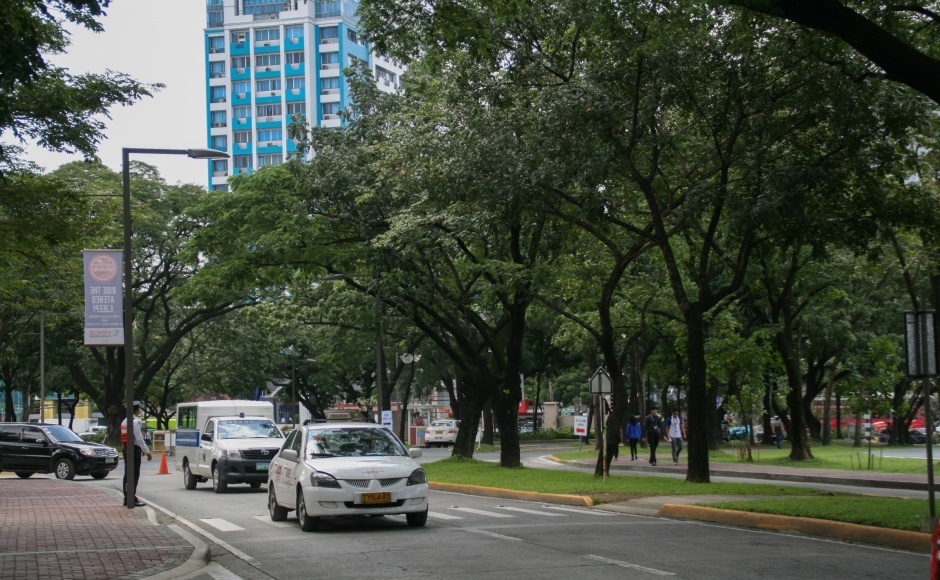IN A memorandum released on September 1, University President Jose Ramon Villarin, SJ announced the creation of the Campus Security and Mobility Office (CSMO) under Vice President for Administration Nemesio Que, SJ.
According to the memorandum, the office was created in view of the growing demand for safety and security in the four Ateneo campuses located in Loyola Heights, Pasig, Rockwell and Salcedo.
The responsibilities of the CSMO include the managing of and developing programs for campus safety and mobility for all Ateneo campuses.
The memorandum further stated that the CSMO will serve as the university’s conduit to government and external agencies concerning campus welfare, and will ensure the university’s compliance with government mandated environmental and occupational safety and health requirements.
The recommendation of the Ateneo Traffic Group to have a central authority in managing traffic and enforcement of rules and regulations was also considered in the creation of the CSMO.
The Ateneo Traffic Group reviews the university’s policies and systems on traffic management, identifies areas for improvement and proposes solutions to issues.
Proactive measures
In an interview with The GUIDON, CSMO Director Marcelino Mendoza said that, because the office is relatively new, they want to focus more on profiling, auditing and collecting various data to serve as their baseline information.
The information will be used to formulate a comprehensive plan covering security, occupational safety, health, environmental compliance and mobility.
The plan includes inspecting buildings, and a safety security and risk assessment.
With regard to traffic, the CSMO will focus on a road network audit in terms of capacity and physical condition, a vehicle volume count and an assessment of conflicts such as the intersections in Katipunan Avenue.
CSMO Assistant Director and current Head of Campus Safety and Security under the Facilities Management Office Josephy Almosera explained that the CSMO is coordinating with their counterparts from the school units to ensure alignment of standards related to safety, security and mobility.
These school units include the Office of Administrative Services, the Office of the Associate Dean for Student Affairs, and the Basic Education Facilities Management and Security Office.
In line with this, the CSMO is working closely with Megaforce Integrated Security Agency (MISA) in requiring security personnel to regularly attend trainings for emergency response, crime prevention, traffic management and enforcement, and safety and customer service, among others.
MISA is an external security agency that is currently employed by the Ateneo.
According to Almosera, the CSMO also coordinates with various agencies to implement peace and order, traffic management, environmental compliance, fire safety and disaster response within the campus.
These agencies include the Barangay Peace and Order Council, the Philippine National Police (PNP), the Metropolitan Manila Development Authority (MMDA), the Department of Environment and Natural Resources and the Bureau of Fire Protection
Mendoza said that the CSMO also wants to strengthen their intelligence network by regularly communicating with the PNP and the Armed Forces of the Philippines.
Future projects
Mendoza and Almosera also outlined the long-term plans of the CSMO.
According to Mendoza, the CSMO wants to further ease traffic congestion by reducing the volume of vehicles on campus through constructing bike lanes and encouraging students and parents to participate in the school service and carpooling system.
Furthermore, Mendoza said that the CSMO plans to align safety and security standards in the Ateneo campuses by focusing on “combined man- and technology-based preventive and impact mitigation measures.”
The said measures include utilizing a closed-circuit television system and car park automated access control system.
He added that the CSMO is planning to implement a comprehensive emergency response and management program.
Almosera explained that this entails identifying risks and vulnerable areas based on the population, facility profile and nature of operations in a particular building.
Response procedures, such as the establishment of an emergency response team, will then be crafted based on the identified risks.
There will also be recovery procedures such as stress debriefing for victims, reconstructing damaged facilities and media management.
Traffic management
In light of the new Katipunan Avenue traffic scheme, the CSMO is working with the MMDA and other school units to ease traffic congestion on and off campus.
The new traffic scheme has received negative feedback from the Ateneo community since its implementation on September 13.
Social sciences senior AJ Palad, who drives a vehicle to and from school, labels the scheme as “very bad and ineffective.”
Palad expects that the CSMO will properly address the growing traffic problems inside the Ateneo, especially in creating strategies to improve entry into the campus.
Almosera said that based on the data they gathered, the CSMO has made several adjustments that could alleviate traffic problems.
These changes include the shifting of Masterson Drive in front of the Church of the Gesù into a two-way road, closing Gate 2.5 and opening the Gate 3 annex to decongest vehicles, and creating more strategic stops for the new electronic vehicle operation system.







